The Southwest is full of simple pleasures for RVers, like pretty pink sunsets and wide open vistas. But lurking beneath those heavenly skies is a deadly hodgepodge of dangerous desert plants RVers can get sick and even result in death.
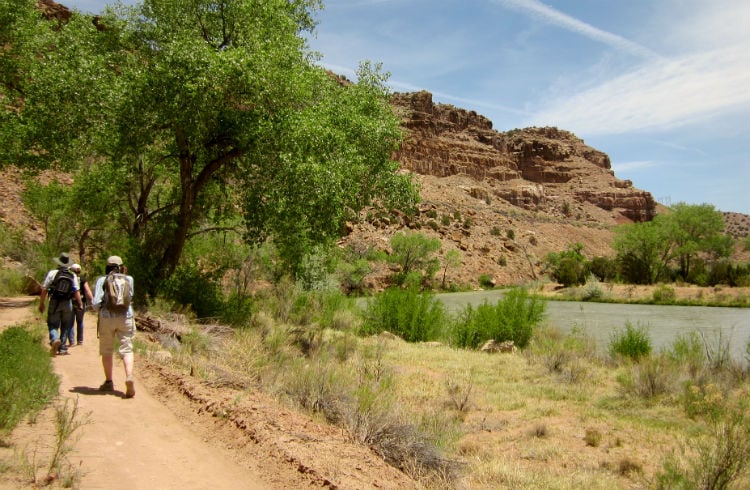
Prior to exploring the desert environment study these species of plants to prevent injury, serious sickness or even death. Photo courtesy of NPS
These plants aren’t the perfect plants for RV living. Before heading out on a desert stroll this winter, get to know these toxic plants or it could be your last.

The Buttonbush can be found in California, Arizona, and Texas.
Buttonbush (Cephalanthus Occidentalis)
The Buttonbush plant grows in riparian wetlands, swamps, ditches, and floodplains. You’ll find it in California, Arizona, and Texas.
When circumstances are right, this 10-foot tree produces fragrant white flowers about 1.5 inches wide and resembles white pincushions.
Although waterfowl and mammals eat Buttonbush seeds, if you eat the flowers you’ll ingest the poison cephalothin, which causes vomiting, convulsions, and paralysis.
“Teddy Bear” or “Jumping” Cholla (Cylindropuntia fulgida)
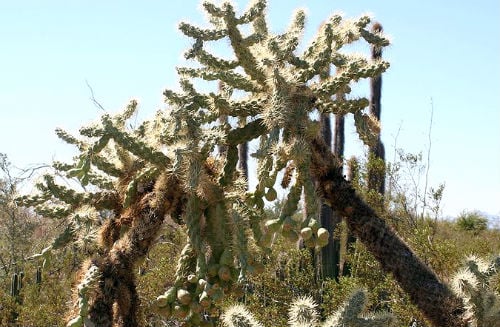
The “Jumping” Cholla Photo by Dave Pape
The species Teddy Bear or Jumping Cholla appear as cotton but like many things in the desert, looks are deceiving. The slightest bump will knock spiny segments loose.
Each Cholla cactus needle contains hundreds of microscopic scales that resemble porcupine quills. Each needle can individually burrow into the skin and make removal painfully slow. Keep away at all costs.
New Mexico Locust (Robinia neomexicana)
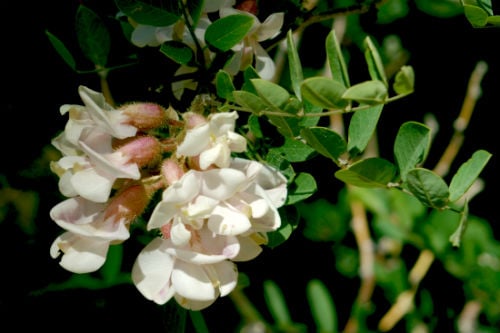
The New Mexico Locust Photo by Jerry Friedman
Any plant that contains the word “Locust” is bound to be sinister. This dangerous desert plant RVers often encounter is no exception.
The perennial deciduous tree grows throughout Arizona from sunny canyons to mountain riparian areas to coniferous forests. Lovely pinkish flowers bloom on the tree in late spring and early summer. When the flowers dry up an ugly brown, hairy bean pod takes over. Just one bite of the seeds contained within those pods can kill a child or animal.
Desert Thorn-Apple (Datura Discolor)
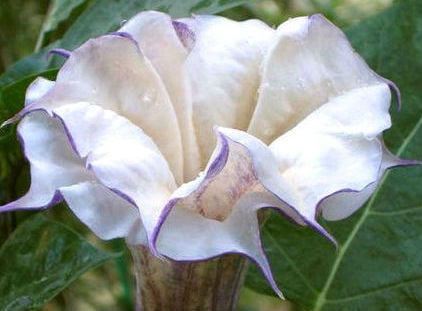
Desert Thorn-Apple Photo by David Dickerson
This bushy Southwestern plant appears fragile at first glance, but don’t let the white trumpet flowers fool you. It’s loaded with poisonous and toxic tropane alkaloids that can kill if ingested. As a member of the Deadly Nightshade Family, Desert Thorn-apple grows in all four Southwestern deserts in elevations from sea level to 2,500 feet.
Poodle Dog Bush (Eriodictyon Parryi)
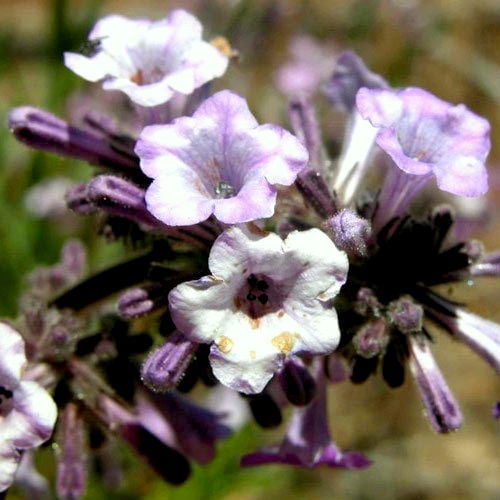
The Poodle Dog Bush. Photo courtesy United States Forest Service
Unknown author, Public domain, via Wikimedia Commons
If you think poison oak is bad, wait until you make contact with the Poodle Dog Bush. This six-foot tall shrub is commonly seen in the Southern California desert mountains.
It has pretty bell-shaped purple flowers, but don’t get too close. Its foul smell is the first clue that it’s a plant to be avoided. Like poison oak, just one short brush with the sticky leaves on this plant can result in painful skin blisters that last weeks.
If you catch it, don’t use topical ointments with benzocaine. This ingredient can actually make the reaction even worse.
Russian Thistle “Tumbleweed”
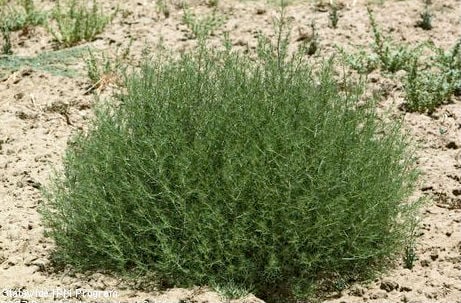
The Russian Thistle Tumbleweed. Photo courtesy of the University of California Statewide Integrated Pest Management Program
Tumbleweed is a noxious weed imported by Russian immigrants at the turn of the 19th century.
It has been a bomb-proof pest ever since. Adverse growing conditions like prolonged droughts can boost a tumbleweed’s nitrate levels to amounts lethal enough to cause organ failure. The West’s most recognizable plant can also cause stomach upset, vomiting, tremors, ataxia, seizures, and even death.
Want to know about even more ways the Southwest’s dangerous desert plants RVers can get sick or die from? Visit the Arizona-Sonora Desert Museum, where you can see over 1400 kinds of friendly and dangerous desert Southwest plants.

Hi Rene,
Thank you for the information! I hate tumbleweeds anyway ~ we were camp hosts at a county campground in California for just over a year and I’d pick up tumbleweed pieces everywhere and throw them in the big trash bins to prevent my 19 lb. dog from getting those barbs in its feet. Nasty plant! Didn’t know about the toxicity, though.
Happy RVing,
Barb 🙂
As a kid growing up in Tucson, you could always tell a Midwest transplant. In the winter they would make snowmen out of dried tumbleweeds and then months later wonder why tumbleweeds were growing in their front yard. FYI, you shouldn’t just eat random desert plants.
I generally do not eat plants in the ground no matter how good they look.
Thanks for the great article. I never touch plants that I am not familiar with anyway, but your article made me aware to NOT touch these desert plants.
The article should have included Oleander. It’s a common landscaping plant in the southwest. Excerpts from Wikipedia:
Nerium oleander is a shrub or small tree in the dogbane family Apocynaceae, toxic in all its parts.
Oleander is one of the most poisonous commonly grown garden plants.
Except for children who might be at greater risk, “the human mortality associated with oleander ingestion is generally very low, even in cases of moderate intentional consumption (suicide attempts)”.
Oleander sap can cause skin irritations, severe eye inflammation and irritation, and allergic reactions characterized by dermatitis
Ingestion of this plant can affect the gastrointestinal system, the heart, and the central nervous system. The gastrointestinal effects can consist of nausea and vomiting, excess salivation, abdominal pain, diarrhea that may contain blood. Cardiac reactions consist of irregular heart rate, sometimes characterized by a racing heart at first that then slows to below normal further along in the reaction. Extremities may become pale and cold due to poor or irregular circulation. The effect on the central nervous system may show itself in symptoms such as drowsiness, tremors or shaking of the muscles, seizures, collapse, and even coma that can lead to death.
Do you have any information regarding a poison berry that grows near Las Cruces, NM? I have a great great Uncle who died as a child eating these.